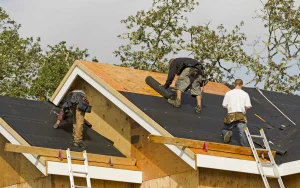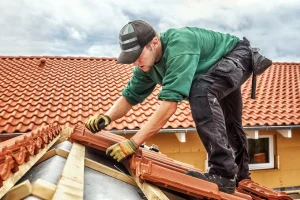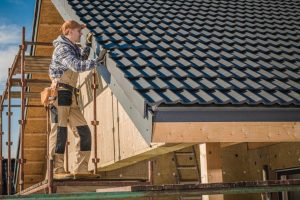As winter approaches, ensuring your roof is in peak condition becomes crucial to protecting your home from harsh weather. Your roof is your home’s first line of defense against rain, snow, wind, and ice. Any weaknesses or damage can lead to costly repairs, uncomfortable living conditions, and even safety hazards if not addressed before the cold sets in. Here are five key signs that your roof may need repair before winter arrives to prevent more severe issues down the road.
1. Missing or Damaged Shingles
One of the most noticeable and common signs that your roof needs repair is missing or damaged shingles. Shingles play a vital role in protecting your home by acting as a waterproof layer between your roof’s structure and the elements. If shingles are missing, cracked, or curled, it compromises your roof’s ability to shed water and keep your home dry. During winter, damaged shingles can allow moisture from snow and ice to seep into your home, leading to leaks, mold growth, and even structural damage. If you spot any visible signs of wear, it’s important to have them repaired or replaced before the winter weather worsens the situation.
2. Leaks or Water Stains
If you notice water stains on your ceiling, walls, or in your attic, this is a clear indication that your roof may be leaking. Even small leaks can escalate into larger problems, especially during winter when melting snow and ice can worsen existing roof damage. Over time, leaks can damage insulation, lead to electrical issues, and even weaken the structure of your home. In colder climates, a small leak can also lead to ice dams—thick ridges of ice that form at the edge of your roof and prevent proper drainage, forcing water to seep back under the shingles. If you notice any signs of leaks or water stains, it’s crucial to schedule a professional inspection and repair before the first snowfall.
3. Sagging Roof Deck
A sagging roof deck is a serious red flag indicating structural damage, often caused by prolonged exposure to moisture or rot. A sagging roof can occur if water has infiltrated the roof’s underlying structure, weakening the beams or supports. Additionally, heavy snow buildup can add excess weight to a compromised roof, increasing the risk of collapse. This issue not only compromises your home’s safety but can also lead to expensive and dangerous situations if not addressed. If you notice any dips or unevenness in the roofline, it’s critical to have a professional assess the structural integrity of your roof and provide the necessary repairs before winter.
4. Granules in the Gutters
If you find an accumulation of granules in your gutters during routine cleaning, this could indicate that your shingles are nearing the end of their lifespan. Granules are the small, sand-like particles that coat the surface of asphalt shingles, protecting them from UV damage and the elements. While some granule loss is normal over time, excessive granules in your gutters suggest that your shingles are deteriorating and may no longer provide adequate protection. Once shingles lose their granules, they become brittle and more prone to cracking and breaking, especially under the pressure of snow and ice. To avoid leaks and further damage, it’s important to have your roof inspected and repaired as needed.
5. Flashing Issues
Flashing is a crucial part of your roof system, used to seal and protect areas where the roof meets chimneys, vents, skylights, or other structures. Over time, flashing can become loose, corroded, or damaged, creating vulnerable points where water can penetrate your roof. If your flashing is compromised, even small amounts of moisture can seep in, leading to significant water damage and leaks. Before winter arrives, it’s important to inspect your flashing and replace or repair any areas that are worn or broken. Properly functioning flashing can make a big difference in preventing leaks during heavy snow or rainfall.
Conclusion
Your roof is one of your home’s most important features, especially as winter brings snow, ice, and freezing temperatures. Addressing potential roof problems before the cold weather hits can save you from much larger issues down the road. If you notice any of the signs mentioned—missing shingles, water stains, sagging roof deck, granules in the gutters, or flashing problems—it’s crucial to contact a professional roofing contractor for an inspection and repair.
By taking action now, you’ll ensure that your home stays warm, dry, and protected throughout the winter season. Don’t wait for a minor issue to become a major headache—ensure your roof is ready to handle whatever winter throws at it!




